15 Adorable Dog Breeds with Surprisingly Short Lifespans
Dogs fill our lives with love, loyalty, and unforgettable memories—but as every pet parent knows, their time with us never feels long enough. While many dogs enjoy lifespans of 10 to 13 years, some breeds are known for having much shorter life expectancies. Whether due to their large size, genetic health issues, or breed-specific conditions, these pups often leave us far too soon.
For prospective dog owners, it’s important to understand these lifespan differences—not to discourage adoption, but to be prepared for the unique care and emotional journey that comes with certain breeds. These dogs may not stay with us as long, but their impact is lasting.
Here are 15 dog breeds that may have shorter lifespans—but whose companionship is worth every moment.
1. Great Dane: Gentle Giants with Brief Lives
Standing tall as apartment-sized pups, Great Danes capture hearts with their sweet temperaments despite their imposing stature. These majestic dogs typically live only 7-10 years, making their time with families heartbreakingly short.
Their brief lifespan stems from heart problems, bloat, and joint issues common in large breeds. Danes grow rapidly during their first year, which can contribute to health complications later.
Despite their size, these dogs believe they’re lap puppies and will try to cuddle up with you on the couch. Their nickname “Apollo of Dogs” reflects their dignified presence that makes every moment with them precious.
2. Dogue de Bordeaux: French Mastiffs with Limited Time
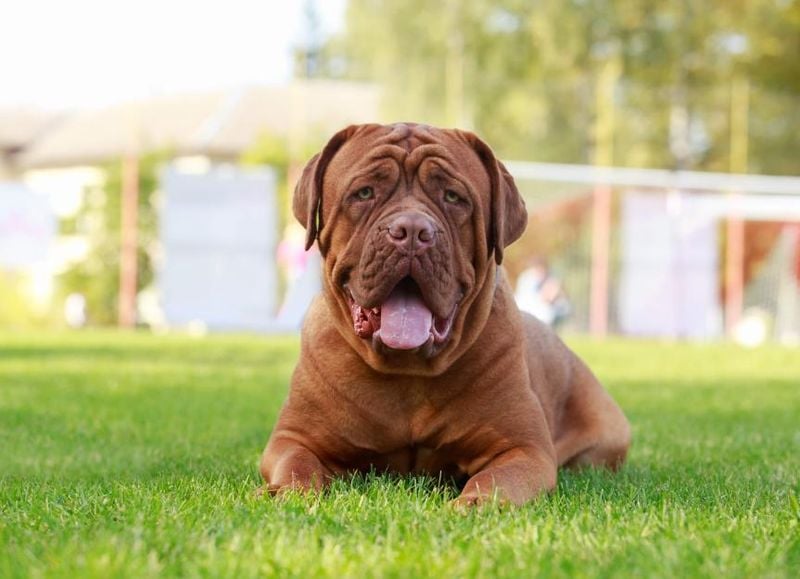
Famous from the movie “Turner & Hooch,” these wrinkly-faced French mastiffs pack personality into their short 5-8 year lifespans. Their massive heads and serious expressions hide incredibly loyal and affectionate temperaments.
Health challenges including heart disease and overheating in warm weather contribute to their brief lives. These ancient dogs were once used for hunting wild boars and guarding estates in France.
Their distinctive red-mahogany coats require minimal grooming, but those adorable face wrinkles need regular cleaning to prevent infections. Despite their intimidating appearance, they’re typically patient with children and form deep bonds with their families.
3. Irish Wolfhound: Tallest Dogs with Shortest Years
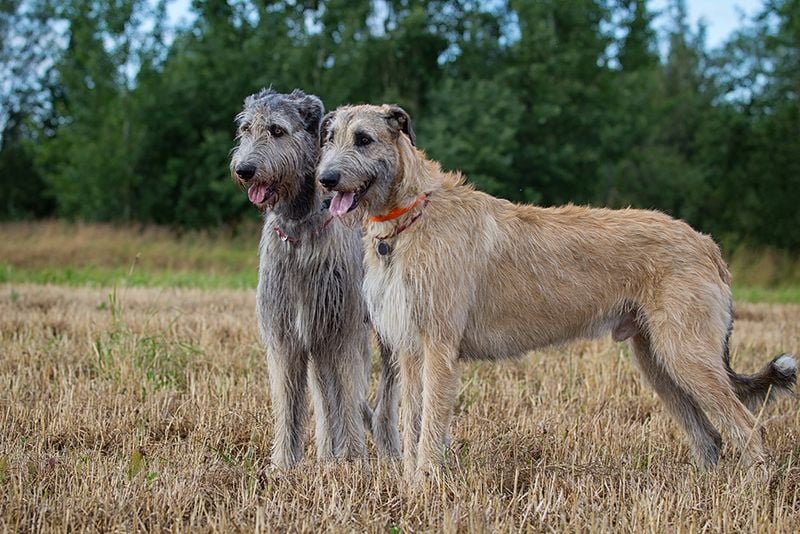
Reaching heights of 32 inches at the shoulder, Irish Wolfhounds hold the title of tallest dog breed but sadly live just 6-8 years on average. Their gentle, laid-back personalities contradict their imposing size and hunting heritage.
Originally bred to hunt wolves in Ireland, these historic sighthounds now prefer lounging on couches to chasing prey. Their rough, wiry coats come in various colors including gray, brindle, red, and black.
Heart disease, bone cancer, and bloat contribute to their brief lifespans. Ancient Romans were so impressed by these dogs that they exclaimed, “They’re not dogs, but what dogs should be!” – a testament to their majestic presence that continues to captivate dog lovers today.
4. Bernese Mountain Dog: Tri-Colored Treasures with Fleeting Time
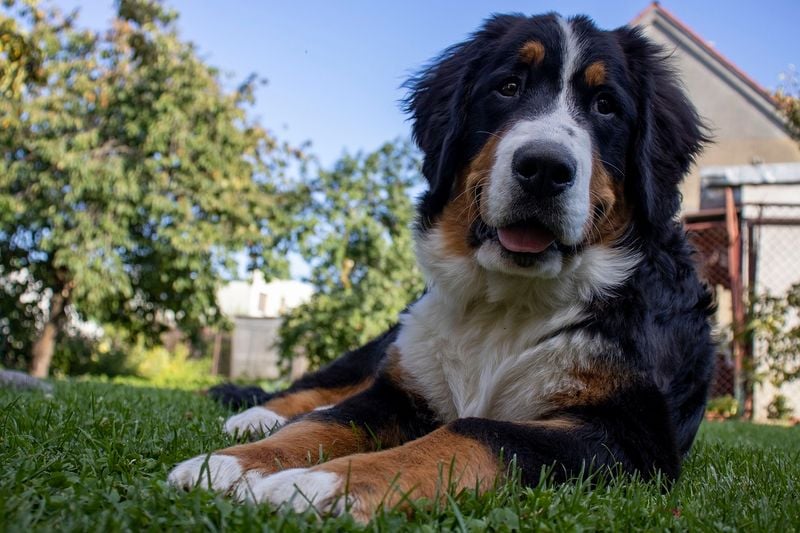
With their striking tri-colored coats and warm brown eyes, Bernese Mountain Dogs win admirers everywhere they go. Sadly, these Swiss farm dogs typically live just 7-9 years, much shorter than similarly-sized breeds.
Cancer affects over half of all Berners, significantly limiting their time with families who adore them. Originally farm dogs from the Swiss Alps, they excel at cart-pulling, herding, and being wonderful family companions.
Their thick double coats shed heavily twice yearly, creating what owners affectionately call “Berner tumbleweeds” around the house. Despite their brief lives, these dogs live fully – working hard, playing joyfully, and loving deeply, making every moment with them count.
5. Bullmastiff: Protective Powerhouses with Brief Lifespans

Bred as gamekeeper’s night dogs to catch poachers, Bullmastiffs combine strength with surprising stealth. These muscular guardians typically live just 7-9 years, with males weighing up to 130 pounds and females slightly less.
Their short muzzles make them prone to breathing difficulties and overheating. Bullmastiffs were developed in England by crossing Bulldogs with Mastiffs, creating the perfect blend of power and agility.
Despite their imposing presence, they’re known as “gentle giants” around family members, especially children. Their short, easy-care coats come in fawn, red, or brindle, often with that distinctive black mask that gives them their characteristic alert expression.
6. Rottweiler: Loyal Protectors with Abbreviated Lives
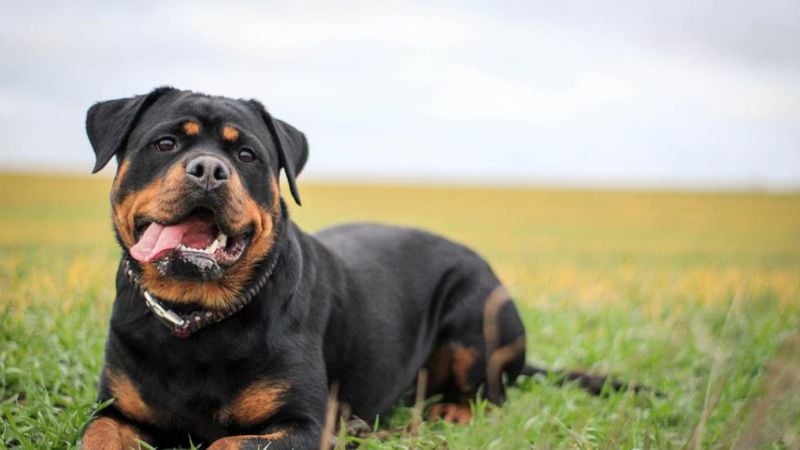
Behind those almond eyes and confident stance lies a Rottweiler’s heart of gold, though it typically beats for only 8-10 years. These powerful working dogs trace their lineage back to Roman times when they drove cattle and protected settlements.
Cancer, heart problems, and hip dysplasia contribute to their shorter lifespans. Contrary to media stereotypes, well-trained Rotties are typically calm, confident, and remarkably in tune with their family’s emotions.
Their distinctive black and mahogany markings require minimal grooming, but their exercise needs are substantial. Smart and eager to please, Rottweilers excel in police work, therapy, and as service dogs – packing tremendous versatility into their abbreviated lives.
7. Saint Bernard: Rescue Heroes with Limited Years

Famous for alpine rescues with brandy barrels (a myth, actually!), Saint Bernards live just 8-10 years on average. These massive dogs, weighing up to 180 pounds, were originally bred by Swiss monks to find and rescue travelers lost in mountain snowdrifts.
Their enormous size contributes to joint problems and heart issues that limit their lifespan. Saints are known for their patient, gentle nature with children, though their drooling habits might require keeping towels handy throughout the house!
Their thick double coats – either smooth or long – shed profusely twice yearly. Despite their brief lives, these gentle giants leave massive paw prints on the hearts of families lucky enough to share their homes with these historic rescue heroes.
8. Mastiff: Ancient Giants with Shortened Timelines
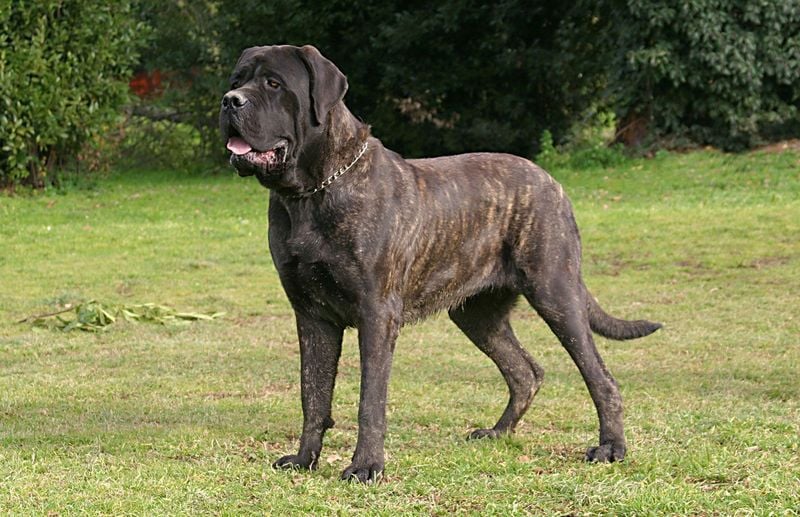
Mastiffs have guarded homes for thousands of years, with ancestors dating back to 3000 BCE, yet these gentle behemoths typically live just 6-10 years. Weighing up to 230 pounds, they’re among the world’s heaviest dog breeds, with females somewhat smaller but equally impressive.
Ancient Romans used them in lion fights and war, yet today’s Mastiffs are typically calm homebodies with surprising sensitivity. Their wrinkled faces and fawn, apricot, or brindle coats are distinctive hallmarks of this ancient breed.
Julius Caesar was so impressed by British Mastiffs that he brought them back to Rome for arena combat. Despite their imposing size, they’re known for their exceptionally mellow temperament and moderate exercise needs – perfect for families seeking a gentle giant companion.
9. Neapolitan Mastiff: Wrinkled Wonders with Brief Time
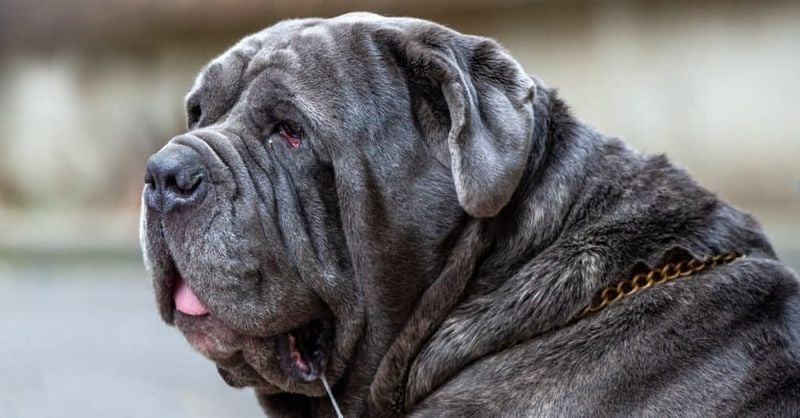
Walking wrinkle collections with soulful eyes, Neapolitan Mastiffs captivate with their distinctive appearance but typically live just 7-9 years. These Italian guardians can weigh up to 150 pounds, with loose skin that served as protection in ancient fighting arenas.
Their massive heads and jowls produce impressive drooling that owners accept as part of their charm. Heat sensitivity and joint problems affect these giants, who prefer lounging indoors to strenuous activity.
Roman armies used these dogs as intimidating war companions. Modern “Neos” remain protective but are surprisingly gentle with family members. Their blue-gray, black, mahogany, or tawny coats require regular cleaning between those magnificent folds to prevent skin infections.
10. Scottish Deerhound: Elegant Hunters with Fleeting Lives

Resembling shaggy greyhounds, Scottish Deerhounds combine aristocratic elegance with a brief 8-10 year lifespan. Once so prized that no one ranked below earl could own them, these ancient sighthounds were bred to hunt red deer across the Scottish Highlands.
Their wiry gray or blue-gray coats require minimal grooming despite their shaggy appearance. Gentle and quiet indoors, they transform into athletic sprinters outdoors, reaching speeds up to 30 mph when chasing prey.
Heart problems and bloat contribute to their shorter lives. Sir Walter Scott called them “the most perfect creature of heaven,” and owners today would agree – these sensitive souls form deep bonds with their families while maintaining a touch of independent dignity.
11. Leonberger: Lion-Like Companions with Limited Time
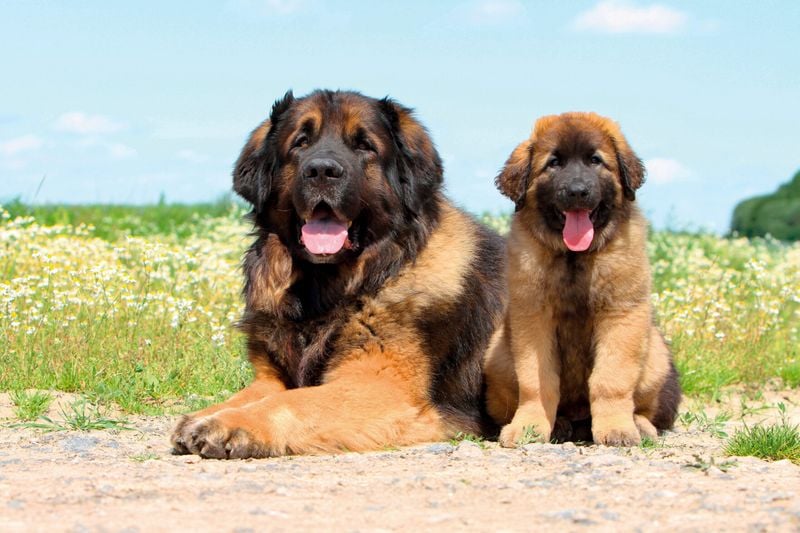
Created to resemble lions from Leonberg, Germany’s town crest, these magnificent dogs typically live just 7-9 years. Their impressive manes and muscular 170-pound frames house incredibly sweet temperaments, making the brevity of their lives particularly heartbreaking for families.
Heinrich Essig developed the breed in the 1830s by crossing Saint Bernards, Newfoundlands, and Great Pyrenees. The resulting dogs became favorites of European royalty, including Empress Elizabeth of Austria and the Prince of Wales.
Their water-resistant double coats require significant grooming to prevent matting. Despite their size, Leonbergers are remarkably agile and excel at water rescue, therapy work, and family companionship – packing tremendous versatility into their abbreviated lives.
12. Newfoundland: Water-Loving Giants with Brief Spans
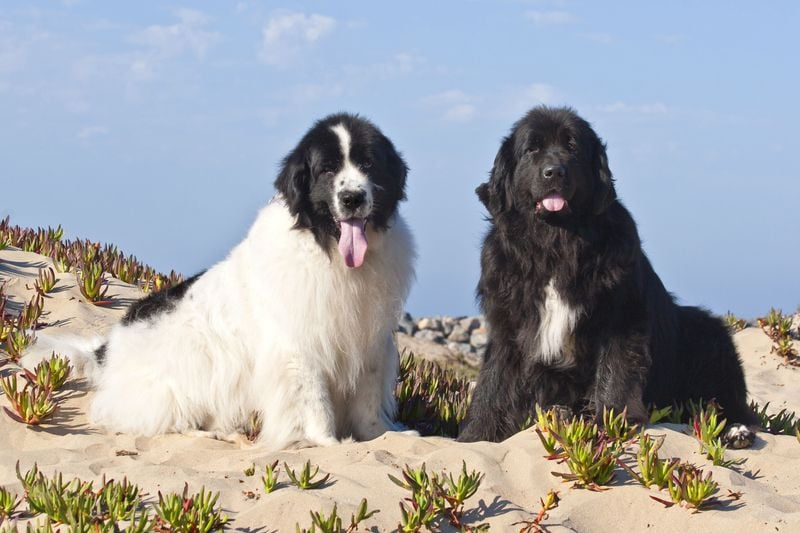
Born lifeguards with webbed feet and water-resistant coats, Newfoundlands typically live just 8-10 years despite their incredible rescue abilities. These sweet-natured giants, weighing up to 150 pounds, are famous for their natural swimming prowess and ability to rescue drowning victims.
Their massive strength allows them to pull boats and heavy loads, yet they’re famously gentle with children. J.M. Barrie was so impressed by his Newfie that he based Nana, the canine nanny in Peter Pan, on his beloved dog.
Heart issues and joint problems limit their time with us. Their thick double coats shed profusely and collect impressive amounts of drool, water, and mud – small inconveniences for families who cherish these gentle, bear-like companions.
13. Shih Tzu: Royal Lap Dogs with Abbreviated Reigns

Unlike the giant breeds on this list, these small “little lion dogs” from Tibet typically live 10-16 years – longer than larger breeds but shorter than many similar-sized dogs. Their flowing coats and distinctive underbites reflect their ancient heritage as treasured companions of Chinese royalty.
Breathing difficulties due to their flat faces can contribute to health problems. Their name “Shih Tzu” literally translates to “lion dog,” though these 9-16 pound pups are far more interested in cuddles than conquests.
Daily grooming is essential unless kept in a shorter “puppy cut.” Playful well into old age, these charming little aristocrats were so valued in ancient China that for years, the penalty for exporting one was death – a testament to how deeply these loyal companions were treasured.
14. Pekingese: Imperial Treasures with Limited Years

Looking like animated lion-dog plushies, Pekingese were sacred in ancient China and lived in imperial palaces. These small dogs typically live 12-14 years – respectable but shorter than many similar-sized breeds due to their flat faces and related breathing issues.
Their distinctive “rolling” gait comes from slightly bowed legs and a unique body structure. Legend claims they originated when a lion fell in love with a marmoset, explaining their fearless personalities in tiny packages.
Their magnificent double coats require significant grooming. During the Opium War in 1860, when British troops entered the imperial palace, an elderly aunt of the emperor reportedly committed suicide after placing her sleeve dogs (Pekingese) in her sleeves – demonstrating the profound connection these dogs have inspired throughout history.
15. Cane Corso: Italian Guardians with Truncated Timelines

Descendants of Roman war dogs, Cane Corsos combine impressive power with unexpected agility and typically live just 9-12 years. Their name derives from Latin “cohors,” meaning “protector,” perfectly describing their dedicated guardian nature.
Nearly extinct by the 1970s, the breed was revived by dedicated enthusiasts. Their muscular bodies and attentive expressions reflect their heritage as versatile Italian farm dogs who guarded property, hunted game, and drove livestock.
Their short coats come in black, gray, fawn, or red, often with a black mask. Despite their imposing appearance, well-socialized Corsos are typically calm, steady companions who form deep bonds with family while maintaining a natural wariness of strangers – packing tremendous loyalty into their abbreviated lives.







